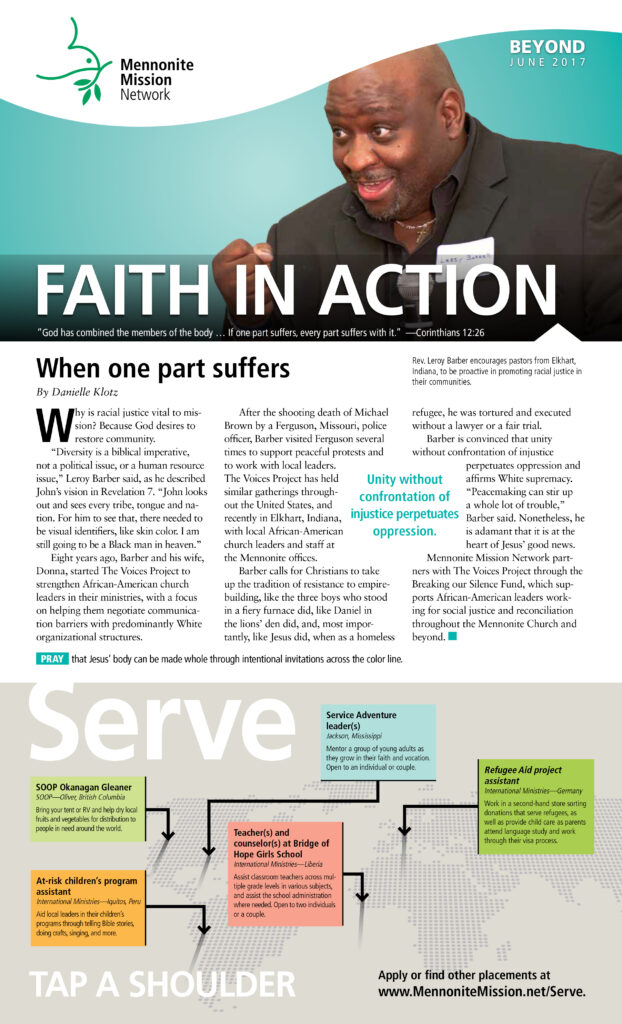Why is racial justice vital to mission? Because God desires to restore community.
“Diversity is a biblical imperative, not a political issue, or a human resource issue,” Leroy Barber said, as he described John’s vision in Revelation 7. “John looks out and sees every tribe, tongue and nation. For him to see that, there needed to be visual identifiers, like skin color. I am still going to be a Black man in heaven.”
Eight years ago, Barber and his wife, Donna, started The Voices Project to strengthen African-American church leaders in their ministries, with a focus on helping them negotiate communication barriers with predominantly White organizational structures.
After the shooting death of Michael Brown by a Ferguson, Missouri, police officer, Barber visited Ferguson several times to support peaceful protests and to work with local leaders. The Voices Project has held similar gatherings throughout the United States, and recently in Elkhart, Indiana, with local African-American church leaders and staff at the Mennonite offices.
Barber calls for Christians to take up the tradition of resistance to empire-building, like the three boys who stood in a fiery furnace did, like Daniel in the lions’ den did, and, most importantly, like Jesus did, when as a homeless refugee, he was tortured and executed without a lawyer or a fair trial.
Barber is convinced that unity without confrontation of injustice perpetuates oppression and affirms White supremacy. “Peacemaking can stir up a whole lot of trouble,” Barber said. Nonetheless, he is adamant that it is at the heart of Jesus’ good news. Mennonite Mission Network partners with The Voices Project through the Breaking our Silence Fund, which supports African-American leaders working for social justice and reconciliation throughout the Mennonite Church and beyond.
PRAY that Jesus’ body can be made whole through intentional invitations across the color line.
4 TIPS for Jesus-shaped practices for the anti-racist church
These suggestions have been distilled from Trouble I’ve Seen: Changing the Way the Church Views Racism, by Drew G. I. Hart (Herald Press, 2016). Used with permission.
- Soak in Scripture and the Spirit for renewed social imagination. Listen to African-American preaching. Rev. Martin Luther King, Jr.’s sermons are readily available on CDs and on YouTube. Better yet, attend services led by African-American and Latin-American pastors.
- Share life. The second chapter of Ephesians describes how Jesus’ reconciliation breaks down walls of hostility. Begin by sharing meals with people you don’t meet in your daily life. As relationships grow, move into more diverse racial settings and geographic locations. As you tear down walls, use the bricks to build bridges between your former social circles and your new more diverse gatherings.
- Practice solidarity in the struggle. Drew Hart writes: “As we follow Jesus into the world, we must join with racially oppressed communities. We must so deeply identify with them that their struggle becomes our struggle (p. 169).” Join what is already happening in your community, especially movements led by leaders of color. This will help avoid falling into pitfalls unseen by vision through the lens of White privilege.
- Seek first God’s realm. Identify as a citizen of God’s nation before aligning yourself with the country of your birth, or your passport country.

